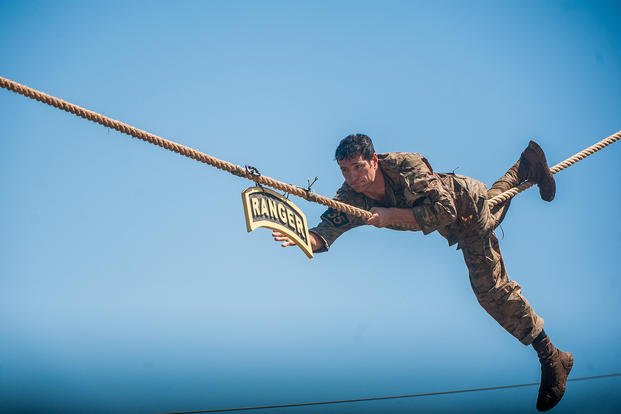When you have the benefit of four years to prepare for military training, there are a multitude of routes you can take. For example, you can mix sports seasons with offseason military training or break up the year into quarters and focus on building a solid foundation and become a well-rounded tactical athlete.
Here is an email from a young man with plans to join the Army after college.
Hi, sir. My name is Chris. I plan to go into the Army after college in about four years. I have your book, "Army Special Ops: Army Ranger and Special Forces Workout." I plan to do the 10-week program at the end of the book, but should I repeat that same program until I go in or do something else? If something else, I will gladly take recommendations from you. Thank you, sir. -- Christian
Hi, Christian,
You have plenty of time to get plenty of training during the four years of college. My advice is to do the program you have as a foundational test. It takes 10 weeks to do The Ranger/SF Workout and will help you build a solid foundation, though you may have to alter some of the miles, reps and sets your first time through. Keep notes on how you had to alter it.
Then after one cycle of the program, do something else. My recommendation is to get in a cycle of lifting/less PT and running distance/more non-impact cardio and some rucking in the fall and winter. Then in the spring and summer, rip it up with more calisthenics, less lifting and more running. See how I have been using this type of Tactical Fitness Periodization for more than 20 years now.
The reason why you need to focus on a full tactical fitness program is that you have four years to master any weaknesses you may have and maintain or grow any strengths as well. In tactical fitness, you have to be good at all elements of fitness: running, rucking, upper-body and lower-body strength and stamina, flexibility and mobility (strength, power, cardio endurance, muscle stamina, flexibility, mobility).
Periodization allows for you to build upon all the fitness elements each year until you have built a strong foundation of all of them, turning weaknesses you may have now into borderline strengths in four years. Any of the Tactical Fitness Trilogy is a great answer, but so is playing a sport. I played rugby in college and lifted and ran sprints during the preseason. During the season, I added in swim workouts and practices. Then after the season, I went hardcore in SEAL prep-type workouts (mainly mastering the physical screening test, or PST).
Something to consider, too, while in college: time management. Here is an answer to fitting in fitness during a busy school schedule.
After 20 years of this type of training, do not think of it as rigid. We are adding in new elements, such as kettlebells, weight vests, the TRX suspension system, tires, sledgehammers, sleds, crawls and carries to enhance our program each year.
For your four years, you can grow into this type of training and find items you enjoy while building the perfect tactical athlete. We have many favorite go-to workouts but also create new workouts every day. Trying new ideas should be part of your training to find what works for you.
Related Articles:
Tactical Fitness -- Dirty Dozen of the Tactical Athlete
Stew Smith is a former Navy SEAL and fitness author certified as a Strength and Conditioning Specialist (CSCS) with the National Strength and Conditioning Association. Visit his Fitness eBook store if you're looking to start a workout program to create a healthy lifestyle. Send your fitness questions to stew@stewsmith.com.
Want to Learn More About Military Life?
Whether you're thinking of joining the military, looking for fitness and basic training tips, or keeping up with military life and benefits, Military.com has you covered. Subscribe to Military.com to have military news, updates and resources delivered directly to your inbox.


















